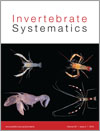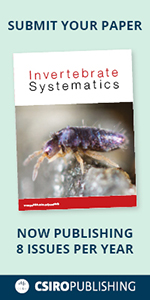IS15064Re-evaluation of the systematic status of two deep-water recorded Periclimenes species (Decapoda : Palaemonidae), with a preliminary analysis on the evolution of certain echinoid-associated palaemonid shrimps and related taxa
Previous studies have suggested that the systematic status of two deep-water echinoderm-associated palaemonid shrimps might be problematic. Based on an analysis incorporating molecular, morphological and ecological data, the systematic status of the two species was re-evaluated and discussed. A preliminary scheme of the evolutionary process of the echinoid-associated palaemonid shrimps is also presented, suggesting the extant species might have evolved through several independent pathways.




